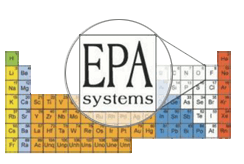Abu Dhabi
EPA Systems provided project management for Abu Dhabi’s Airport expansion and Raha Beach baseline environmental assessment, including the design, integration, installation, and startup of ambient air and meteorological monitoring stations. Each monitoring system included continuous monitoring for O3, SO2, NOX, CO, PM10, and the meteorological parameters wind speed, wind direction, and ambient temperature.
Australia
EPA Systems Principal Consultant, Richard Hovan Sr., installed the first PEMS system in the country, which included developing the Performance Specification for the South Australian EPA. The system was installed and certified on a 100MW Gas Turbine.
Bahrain
EPA Systems project managed the testing portion of a demonstration Predictive Emission Monitoring System (PEMS) for Bahrain Oil Company (BaPCO).This project consisted of installing a Pavilion Corporation’s Pavilion-8 software solution to predict nitrogen oxides (Nox) and oxygen concentration in a boiler stack exhaust. The project proved that the PEMS could predict emission concentrations to within 5% of actual emission levels as measured by USEPA reference methods.
Canada
Eric Anderson was the Project Manager for a particulate matter, formaldehyde, and meteorological monitoring program at a Forest Products company in Pembroke. The project included the development of a custom-designed, time-integrated, wind selective monitoring system. It also employed passive deposition samplers to collect and characterize deposited particles using optical microscopy. Data was used by Canadian Ministry of the Environment to determine compliance with Canadian ambient guidelines.
Egypt
EPA Systems Principal Consultant, Richard Hovans Sr., managed grass-roots projects in Egypt; including an 1800MW Power Plant, a 64,000 SqFt office building, and several water treatment facilities.
France
EPA Systems prepared and presented a seminar on Leak Detection and Repair (LDAR, including the incorporation of “Smart LDAR”, for Bureau Veritas (BV). BV required information on how the US regulations were developed, how emission factors could be modified to estimate mass emissions, and how optical imaging could be considered comparable to the USEPA Method 21 technique being used throughout Europe.
India
Eric Anderson conducted a week-long seminar and demonstration project on the use of fugitive emission monitoring techniques (both traditional and optical imaging) and their relation to Clean Development Mechanism (CDM) under the Kyoto protocol. The seminar was conducted in Mumbai, India and consisted of a day-long event attended by participants from India’s oil and gas industries and environmental agencies. The demonstration projects were held at several of India’s largest industrial facilities.
Japan
EPA Systems provided management for a large five-station air toxics, criteria pollutant and meteorological monitoring project at a site outside of Tokyo, Japan. The program included monitoring for the criteria pollutants (SO2, NOX, CO and O3), meteorological parameters, dioxins and furans, PCBs, PAHs, acid gases, VOCs, aldehydes and ketones, and pesticides. Ambient monitoring for the discrete parameters was also conducted in selected residential housing areas to assess the degree these pollutants were being transported from the ambient to indoor environments. Services included project costing, project design, technical direction, data analysis, review and reporting.
Korea
EPA Systems Principal Consultant, Richard Hovan Sr, provided Mills Safety early warning systems for Coal Feed System fires, incorporated with a fast acting suppression system, to mitigate incidents in Korean coal plants.
People's Republic of China
EPA Systems Principal Consultant, Richard Hovans Sr, provided Mills Safety early warning systems and services to mitigate potential incidents at three of the five largest state-owned utility enterprises in China; including China Shenhua Energy, Huaneng Power, and China Datang.
Mexico
EPA Systems conducted an ambient air monitoring audit for 10 monitoring stations within the Mexico City Monitoring network. The project included performance audits of the continuous criteria pollutant analyzers (SO2, NOX, CO, and O3) and the continuous particulate matter analyzers. Additionally, the audit included a systems review of the network to evaluate the systems and procedures used to calibrate and operate the network and whether these were sufficient to ensure adequate data quality.
Morocco
Jorf Lasfar Electrical Company (JLEC), located in El Jadida Morocco, is required to conduct annual stack and ambient systems audits to confirm on-going compliance with World Bank loan guarantees as well as their ISO 14001 certification. EPA Systems has been involved in these audits since 2002 and became the prime contractor in 2009.
India
Eric Anderson conducted a week-long seminar and demonstration project on the use of fugitive emission monitoring techniques (both traditional and optical imaging) and their relation to Clean Development Mechanism (CDM) under the Kyoto protocol. The seminar was conducted in Mumbai, India and consisted of a day-long event attended by participants from India’s oil and gas industries and environmental agencies. The demonstration projects were held at several of India’s largest industrial facilities.
Quatar
EPA Systems provided project management for the installation, startup, and operation of an ambient air and meteorological monitoring station in Al Jamailiyah, Qatar. The system was configured to continuously monitor O3, NOX, methane and non-methane hydrocarbons, and meteorological parameters. The configuration also automatically performed daily zero/span, bi-weekly precision checks, and quarterly multipoint (including GPTs) calibrations. EPA Systems also managed a series of projects for RasGas, North of Qatar, to monitor State of Qatar Compliance and Vendor Performance. Parameters monitored during testing campaigns included sulfur dioxide (SO2), nitrogen oxides (NOX), carbon monoxide (CO), carbon dioxide (CO2), excess oxygen (O2), total hydrocarbons, aromatic hydrocarbons, methane, ethane, methyl and ethyl mercaptans, and volumetric flow rate.
Republic of China (Taiwan)
EPA Systems drafted the specifications that the Republic of China’s (R.O.C.) Environmental Protection Agency used to design their nation-wide CEM network.
Venezuela
EPA Systems conducted an air toxics technology transfer seminar for INTEVEP, S.A. in Caracas, Venezuela. Topics covered during the seminar included air toxics monitoring, analytical technologies for monitoring air toxic compounds, and monitoring system siting and logistics. Participants included top INTEVEP officials and Venezuela’s Minister of Environment.
